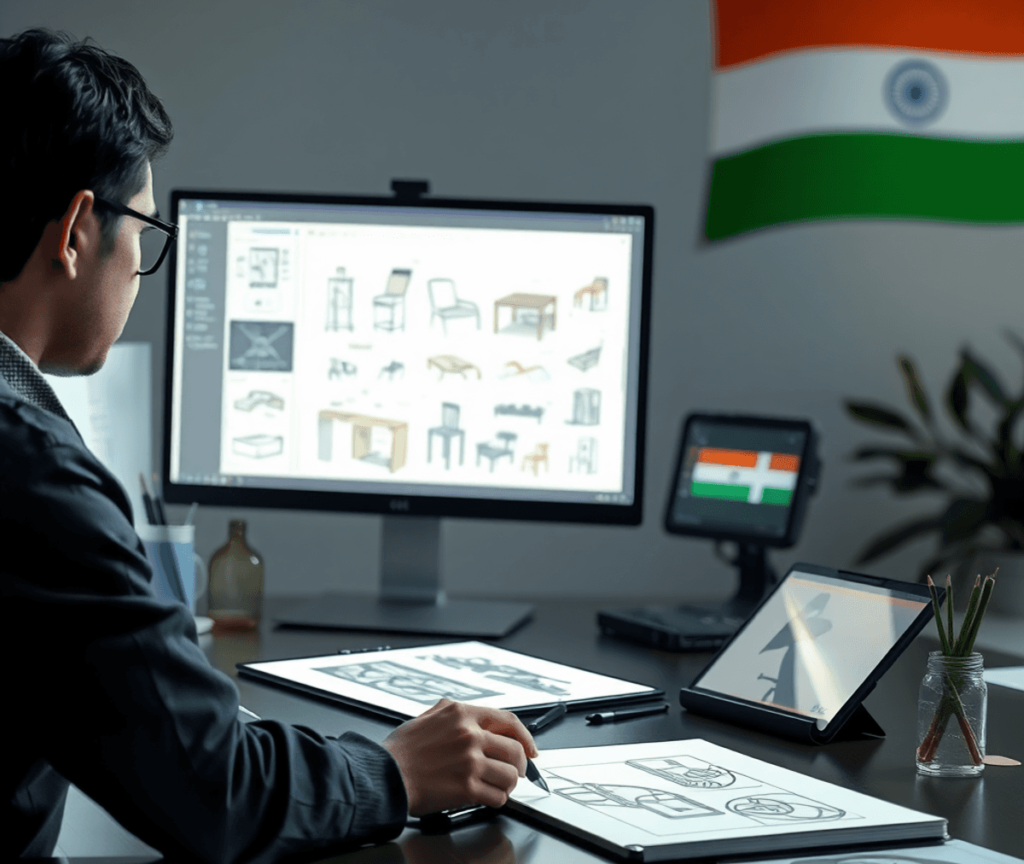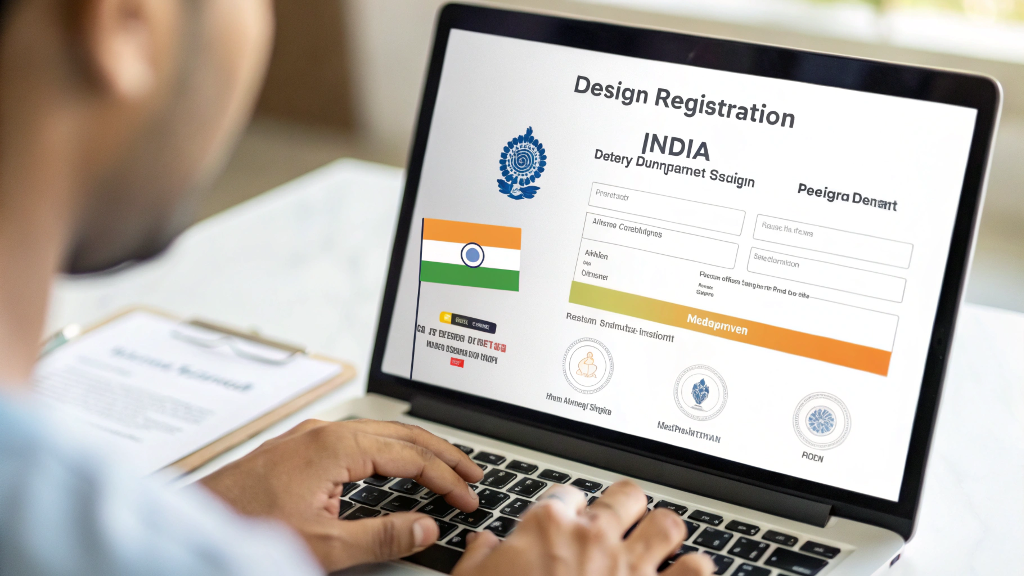Complete Guide to Design Registration in India (2025): Process, Protection & Fees

Introduction
Design registration is a crucial aspect of intellectual property protection in India, governed by the Designs Act, 2000. This comprehensive guide will walk you through everything you need to know about registering and protecting your industrial designs in India.
[Suggested Image: Infographic showing the key benefits of design registration]
Why Register Your Design?
The registration of industrial designs in India offers several significant advantages for creators and businesses:
-
- Legal Protection: Exclusive rights to use, sell, and license your design
- Market Advantage: Competitive edge in the marketplace
- Commercial Value: Asset creation for business growth
- Licensing Opportunities: Revenue generation through design licensing
- Legal Recourse: Ability to take action against infringers
Understanding Design Registration
What Qualifies as a Design?
The Designs Act, 2000 defines a registrable design as:
| Eligible Design Elements | Non-Eligible Elements |
|---|---|
| Shape and configuration | Purely functional features |
| Patterns and ornaments | Trademarks or logos |
| Color compositions | Technical drawings |
| Surface decorations | Methods of construction |
| Lines and contours | Traditional designs |
Design Classification System
India follows the Locarno Classification system, which includes 32 classes. Here are some key classes:
| Class | Category | Examples |
|---|---|---|
| 1 | Foodstuffs | Biscuits, chocolates, packaged foods |
| 2 | Clothing | Garments, accessories, buttons |
| 9 | Packaging | Bottles, containers, boxes |
| 14 | Electronics | Mobile phones, computers, gadgets |
| 32 | Graphic Symbols | Logos, icons, interface elements |
Registration Process

Step-by-Step Guide
- Pre-Filing Stage
-
- Conduct design search
-
- Prepare design representations
-
- Choose appropriate class
-
- Gather required documents
2. Application Filing
-
- Submit Form-1
-
- Pay registration fees
-
- Provide design representations
-
- Include priority documents (if applicable)
3. Examination Stage
-
- Application review
-
- Novelty assessment
-
- Response to objections (if any)
4.Registration
-
- Certificate issuance
-
- Publication in journal
-
- Design protection begins
Registration Fees
| Category | Individual | Small Entity | Large Entity |
|---|---|---|---|
| Basic Filing | ₹1,000 | ₹2,000 | ₹4,000 |
| Extension (5 years) | ₹2,000 | ₹4,000 | ₹8,000 |
| Expedited Examination | ₹2,000 | ₹4,000 | ₹8,000 |
Additional Costs
| Service | Approximate Cost (INR) |
|---|---|
| Professional Fees | 5,000 – 15,000 |
| Examination Response | 7,000 – 20,000 |
| Opposition Handling | 15,000 – 50,000 |
Design Protection and Enforcement

Protection Period
-
- Initial registration: 10 years
-
- Extension available: 5 additional years
-
- Maximum protection: 15 years total
Rights Granted
The registered design owner receives:
-
- Exclusive right to apply the design
- Authority to prevent unauthorized use
- Right to license the design
- Ability to take legal action against infringement
Recent Legal Precedents
| Case | Year | Key Principle Established |
|---|---|---|
| Philips v. Rajesh Bansal | 2018 | Substantial similarity test |
| Relaxo Footwear v. Aqualite | 2019 | Protection of aesthetic features |
| Reckitt Benckiser v. Wyeth | 2013 | Functional vs aesthetic elements |
Common FAQs
Registration Timeline
Q: How long does the registration process take?
A: Typically 6-12 months without objections.
International Protection
Q: Can I protect my design internationally?
A: Yes, through the Hague System or individual country applications.
Infringement Action
Q: What remedies are available against infringement?
A: Injunctions, damages, and seizure of infringing goods.
Tips for Successful Registration
- Documentation Best Practices
-
- Maintain development records
-
- Document first use date
-
- Keep all design variations
-
- Photograph prototypes
2. Pre-Filing Checklist
-
- Complete design search
-
- Verify novelty
-
- Select correct classification
-
- Prepare quality representations
3. Post-Registration Management
-
- Monitor market for infringement
-
- Track renewal deadlines
-
- Document commercial use
-
- Maintain evidence of use
Online Registration Process
Step-by-Step Online Filing
-
- Visit the IP India website
- Create user account
- Fill Form-1 online
- Upload design representations
- Pay fees electronically
- Submit application
- Track status online
Conclusion
Design registration in India provides crucial protection for industrial designs and offers significant business advantages. Following proper procedures and maintaining thorough documentation throughout the registration process is essential for successful protection of your design rights.
Keywords: design registration in india, design classification, register a design, design patent registration, industrial design registration, patent design, registration design, registration cost, design mark, registration online, designing register

